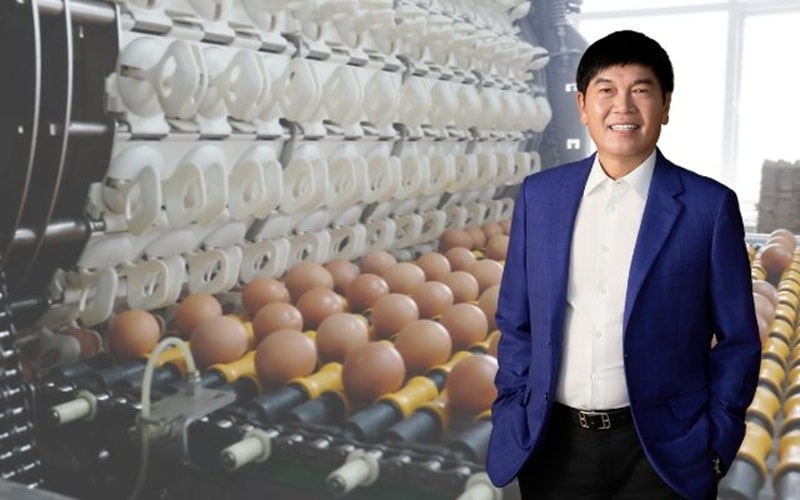HPA IPO elevates Vietnam’s agricultural stocks
The initial public offering (IPO) and listing of Hoa Phat Agricultural Development JSC (HPA) underscore the role of agriculture sector in the stock market of a country whose competitive advantages and economic influence are closely tied to essential consumer goods.

HPA officially launched its IPO of 30 million shares at VND 41,000 per share on 24 November. The listing price implies a trailing 12-month P/E of 6.5x and a P/B of 3.7x for the most recent quarter, with a post-IPO market capitalization of roughly VND 11.9 trillion (assuming full subscription), according to Vietcap’s valuation. The expected VND 1,257 billion raised will be used for financial restructuring, debt repayment, working capital, and investment preparation.
The Agriculture and Livestock Landscape
In the livestock segment, Masan—through Masan MEATLife (MML)—chose to begin its meat supply chain with animal feed, merging Vietnam’s two leading feed manufacturers, ANCO and Proconco, in 2015 and launching the “Bio-zeem’’ product line. Meanwhile, competition in the pork and poultry segments—where DBC, BAF, HAG, and HPA operate—remains intense due to the dominance of international players in Vietnam such as C.P. Vietnam and CJ Vietnam. FDI enterprises accounted for 43% of total pork production in 2022–2023, far exceeding domestic companies (19%).
A similar pattern is seen in the animal feed market. Over the past decade, FDI companies have consistently captured around two-thirds of total feed production, despite representing only one-third of all companies and farms. In contrast, domestic firms—while making up two-thirds of the industry—contribute only one-third of total output. This demonstrates that FDI enterprises tend to be large, well-capitalized players, while domestic firms are smaller and more traditional.
Major FDI manufacturers include C.P. Vietnam (annual capacity 5.3 million tonnes), De Heus Vietnam (approx. 2.7 million tonnes), Cargill Vietnam (est. 1.48 million tonnes), GreenFeed Vietnam (1.4 million tonnes), JAPFA Vietnam (approx. 1 million tonnes), and Sunjin Vietnam (1 million tonnes). On the domestic side, notable producers include Dabaco (1.25 million tonnes), Vinafeed Group (1 million tonnes), Hong Ha Feed (900,000 tonnes), HPA (600,000 tonnes), and BAF (460,000 tonnes).
Within this competitive landscape, Vietcap notes that large domestic feed manufacturers like HPA, with sizable scale, strong distribution networks, and established operations, face less competitive pressure from FDI players. Conversely, smaller private Vietnamese feed producers—with more limited resources—must contend with significant competitive headwinds from foreign firms.
In the context of volatile domestic pork and poultry supply and fierce competition across livestock segments, HPA is emerging as a leading player with its integrated 2F model (from breeding to finished meat). It operates modern farms with strict biosecurity measures and strong self-sufficiency in genetic stock. This is a crucial competitive advantage, given the recurring outbreaks of African Swine Fever (ASF) and rising demand for premium, transparent poultry and egg products. HPA’s IPO plan, with a targeted HoSE listing by year-end, positions the company to raise capital and strengthen its influence in the sector.
Positive Medium-Term Outlook
Operating within the robust ecosystem of Hoa Phat Group (HPG), HPA—despite its relatively young age—has proactively invested in facilities and automation technology. It holds about 10% market share in northern poultry and nearly fully controls the supply of parent stock. In the pork segment, HPA’s modern farming systems allow flexible production adjustments depending on price fluctuations, supporting strong gross margins. Beef and egg operations offer stable growth, driven by high import demand and rising consumer preference for high-quality poultry and eggs.
Financially, HPA demonstrates solid strength: low leverage with net debt equal to just 0–10% of equity, interest coverage above 25–30x, and gross margins and ROE among the highest in the industry. The 2019–2025 hog-price cycle shows HPA’s resilience—profit surged during the high-price period of 2020, dipped slightly as pork prices eased, and recovered quickly in recent quarters. In the first nine months of 2025, HPA recorded revenue of VND 6,409 billion (up 28%) and net profit of VND 1,297 billion (up 88% year-on-year), nearly completing its annual plan.
HPA’s medium-term outlook remains positive as pork prices are expected to fluctuate but follow a seasonal upward trend in late 2025 and early 2026, while poultry and egg operations continue expanding steadily. Additionally, HPA maintains an attractive dividend yield of roughly 9.2% based on the IPO price, ensuring shareholder returns. Its long-term 2030 strategy focuses on expanding integrated livestock chains, upgrading farms, and increasing feed and poultry production to achieve full value-chain control—laying a sustainable path toward becoming a major agricultural player.
Overall, HPA stands out in Vietnam’s livestock industry thanks to its integrated value chain, effective risk management, low leverage, and strong margins. For equity investors, HPA offers not only stable profit growth but also a defensive option in a sector subject to supply volatility, with long-term upside driven by demand for high-quality food and technological adoption in livestock production.








